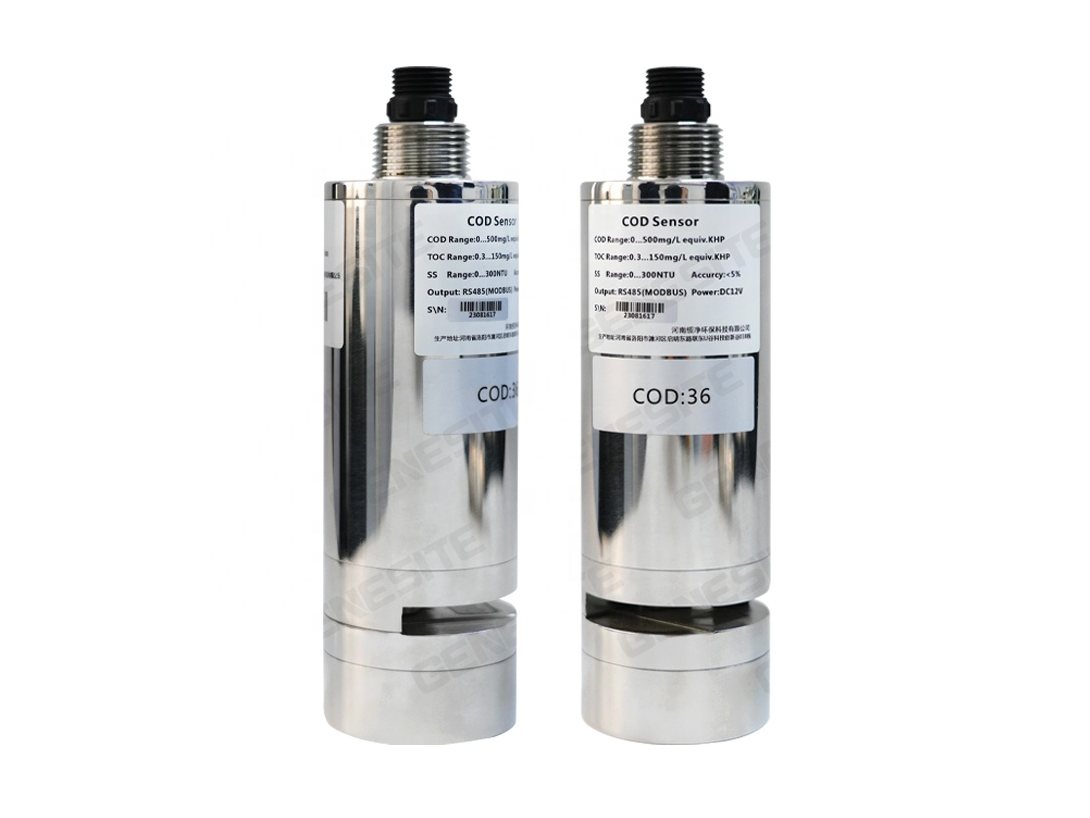Unlocking the Potential of COD Sensors in Modern Applications
Jul 16,2025

Chemical Oxygen Demand (COD) sensors play a pivotal role in monitoring water quality and various chemical processes across multiple industries. These sensors are designed to determine the amount of oxygen that microorganisms will consume while decomposing organic matter. Understanding the functionality and applications of COD sensors can significantly enhance operational efficiency and compliance with environmental regulations.
At the core of a COD sensor's function is its ability to provide real-time data regarding the organic pollution levels in water bodies. This is crucial for industries that deal with wastewater management, as high COD levels can indicate significant pollution and the presence of hazardous substances. By utilizing COD sensors, industries can monitor effluent discharge and take corrective actions promptly to maintain environmental standards.
The operational mechanism of a COD sensor typically involves a combination of chemical reactions and electrochemical detection methods. When a water sample is introduced to the sensor, it undergoes a series of reactions that quantify the amount of oxygen required to oxidize the organic matter present. These reactions are translated into electrical signals, which are processed to provide accurate readings of COD levels. This data helps industries manage their water quality effectively and ensures compliance with environmental laws.
In addition to wastewater treatment plants, COD sensors are increasingly finding applications in various sectors such as food and beverage, pharmaceuticals, and manufacturing. For instance, in the food industry, maintaining low COD levels ensures product quality and safety, while in pharmaceuticals, it helps in managing water used in production processes. The versatility of COD sensors allows them to be integrated into automated systems, providing continuous monitoring and data logging for better decision-making.
Moreover, advancements in sensor technology are enhancing the efficiency and sensitivity of COD sensors. Modern sensors are designed to minimize interference from other substances in the water, thus providing more reliable measurements. Additionally, the development of wireless technology enables remote monitoring, allowing operators to receive data in real-time without being physically present at the site.
As businesses continue to prioritize sustainability and environmental responsibility, the demand for accurate and efficient monitoring tools like COD sensors will only grow. By investing in these sensors, industries can not only improve their operational efficiency but also contribute positively to environmental preservation.
In conclusion, COD sensors are integral to ensuring the quality of water in various industrial processes. Their ability to provide real-time, accurate measurements makes them invaluable for maintaining compliance with environmental regulations and enhancing the overall operational efficiency of businesses. As technology continues to evolve, the potential applications and benefits of COD sensors will expand, making them a critical component in the future of industrial operations.
At the core of a COD sensor's function is its ability to provide real-time data regarding the organic pollution levels in water bodies. This is crucial for industries that deal with wastewater management, as high COD levels can indicate significant pollution and the presence of hazardous substances. By utilizing COD sensors, industries can monitor effluent discharge and take corrective actions promptly to maintain environmental standards.
The operational mechanism of a COD sensor typically involves a combination of chemical reactions and electrochemical detection methods. When a water sample is introduced to the sensor, it undergoes a series of reactions that quantify the amount of oxygen required to oxidize the organic matter present. These reactions are translated into electrical signals, which are processed to provide accurate readings of COD levels. This data helps industries manage their water quality effectively and ensures compliance with environmental laws.
In addition to wastewater treatment plants, COD sensors are increasingly finding applications in various sectors such as food and beverage, pharmaceuticals, and manufacturing. For instance, in the food industry, maintaining low COD levels ensures product quality and safety, while in pharmaceuticals, it helps in managing water used in production processes. The versatility of COD sensors allows them to be integrated into automated systems, providing continuous monitoring and data logging for better decision-making.
Moreover, advancements in sensor technology are enhancing the efficiency and sensitivity of COD sensors. Modern sensors are designed to minimize interference from other substances in the water, thus providing more reliable measurements. Additionally, the development of wireless technology enables remote monitoring, allowing operators to receive data in real-time without being physically present at the site.
As businesses continue to prioritize sustainability and environmental responsibility, the demand for accurate and efficient monitoring tools like COD sensors will only grow. By investing in these sensors, industries can not only improve their operational efficiency but also contribute positively to environmental preservation.
In conclusion, COD sensors are integral to ensuring the quality of water in various industrial processes. Their ability to provide real-time, accurate measurements makes them invaluable for maintaining compliance with environmental regulations and enhancing the overall operational efficiency of businesses. As technology continues to evolve, the potential applications and benefits of COD sensors will expand, making them a critical component in the future of industrial operations.
TAG:
PREVIOUS:
Contact Us
E-mail :
andrew@genesit1.com
Phone:
+8615896508337
Address:
Chanhe Industrial Park,LuoYang City, Henan Province,China


